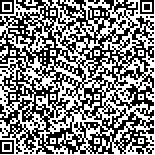下载中心
优秀审稿专家
优秀论文
相关链接
摘要

劈窗算法是目前由热红外遥感图像数据获取陆面温度最主要的方法。由于进行地面像元尺度实时陆面温度同步测量的困难,尚无法直接对现有各劈窗算法进行评判。该文借助于辐射传输模型LOWTRAN 7及其提供的6 种标准大气模式,进行模拟计算,分析了6 种主要劈窗算法对大气廓线误差和比辐射率的敏感度,作为对劈窗算法适用性的一间接判据。
Thermal infrared remote sensing technology supplies an attractive way to measure land-suface temperature (LST)on a large scale simultaneously. NOAA-AVHRR data is commonly used in the inversion study of LST. But the inversion is a challenge for the scientists because of the complexity of land surface. So far split-window algorithm is a major solution to retrieve land-surface temperature from thermal infrared remote sensing data. But because of the obstacle to obtain the in-situ validation measurements simultaneously, including land-surface temperature and emissivity especially in pixel scale, it is confined to judge directly which one is more precious and more applicable. In this paper, using radiative transfer code LOWTRAN-7 and six standard atmosphere models supplied by it, we analyzed, by simulation, the sensibility of the six common split-window algorithms to the atmospheric profile error, including atmospheric water vapor profile and temperature profile. The sensibility to spectral emissivity, including the average emissivity and the differential emissivity between AVHRR channels 4 and 5, is also analyzed. It turns out that, (1)algorithms of SOB and UVM have less sensibility to atmospheric profile, and have more satisfactory accuracy of better than 1.5K; (2)most algorithms are more sensible to the mean emissivity than to the emissivity difference. Sobrino (1991)algorithm has the least sensibility to emissivity. As a result, we obtained an indirect criterion priliminarily for the six split-window algorithms.

